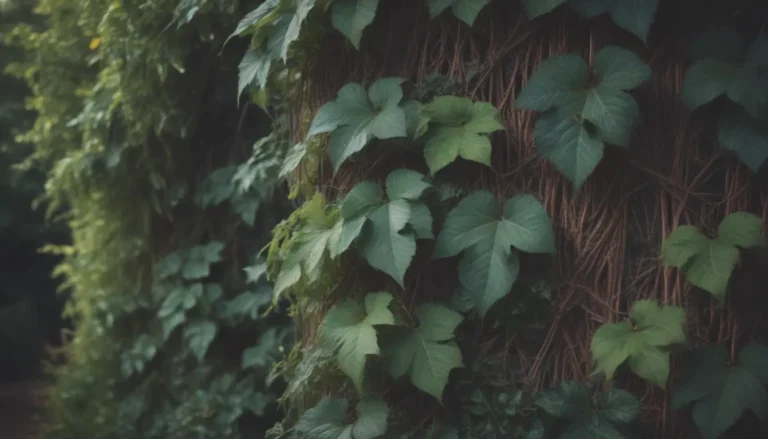The Comprehensive Guide to Growing and Caring for Ginseng

Ginseng has a long history rooted in ancient healing traditions and is highly valued for its medicinal properties. In this comprehensive guide, we will explore everything you need to know about growing and caring for this unique plant. From planting to harvesting, we will cover each step in detail to ensure your ginseng thrives and produces healthy roots that can be harvested for various uses.
Understanding Ginseng Varieties
The two most common types of ginseng are American ginseng (Panax quinquefolius) and Asian ginseng (Panax ginseng). American ginseng is native to North America, while Asian ginseng hails from Manchuria and Korea. Both varieties have distinct characteristics and are used for different purposes, making it essential to understand the differences between them.
Planting Ginseng: A Step-by-Step Guide
Growing ginseng requires patience and precision to replicate its native habitat successfully. By following these steps, you can ensure that your ginseng plants thrive and produce healthy roots for harvesting.
When to Plant
Ginseng seeds should be planted in the fall or early winter to allow them to germinate properly. It is crucial to use stratified seeds that have shed their outer layer to expedite the germination process. Remember to be patient, as ginseng is a slow grower and requires at least three to five years to reach maturity.
Selecting a Planting Site
Choose a shady area with rich, well-draining soil that mimics ginseng’s natural habitat. Preferably, select a location at the forest’s edge with acidic soil and ample organic matter. Ensure that the planting site is free of any obstacles that may hinder root growth, such as tree stumps or rocks.
Spacing, Depth, and Support
Plant ginseng seeds about 1 inch deep in the soil and space them 15-20 inches apart to allow for healthy root development. Remove any debris or obstructions around the plants to ensure they have ample space to grow. Consider providing support for the plants as they mature to prevent damage.
Ginseng Plant Care Tips
Proper care is essential for the healthy growth of ginseng plants. From light and soil requirements to water and temperature considerations, here are some key tips for caring for your ginseng plants.
- Light: Ginseng thrives in partial to full shade, under a woodland canopy. Ensure that the plants receive adequate shade to prevent competition from other plants.
- Soil: Ginseng prefers moist, well-drained soil with plenty of organic matter and calcium. Avoid planting in waterlogged or overly compacted soil to promote healthy growth.
- Water: Ginseng requires moist soil but does not need excessive watering. Mimic the plant’s natural habitat to provide adequate moisture without overwatering.
- Temperature and Humidity: Ginseng prefers cooler temperatures and consistent humidity levels. Avoid planting in areas with high heat or excessive moisture to prevent damage to the plants.
- Fertilizer: Avoid using fertilizers on ginseng plants, as they can hinder growth and affect the plant’s overall health.
Types of Ginseng and Their Uses
Ginseng can be processed into red or white ginseng, each with unique properties and uses. Understanding the differences between Asian and American ginseng can help you choose the right variety for your needs.
- American Ginseng: Known for its cooling effects, American ginseng is commonly used in traditional Chinese medicine for its medicinal properties.
- Asian Ginseng: Considered the hotter version of ginseng, Asian ginseng is prized for its therapeutic benefits and is widely used in Asia for various health purposes.
Harvesting and Storing Ginseng
Harvesting mature ginseng roots requires careful attention to detail to ensure optimal quality. Follow these steps to harvest, wash, dry, and store your ginseng roots properly for future use.
- Harvesting: Wait until the ginseng plants are at least five years old before harvesting. Use a digging stick or trowel to extract the roots, ensuring they have matured adequately.
- Washing and Drying: Gently wash the roots with water and air dry them in a well-ventilated area. Store dried ginseng in a dark, dry place to preserve its potency and flavor.
- Storing: Keep dried ginseng roots in an airtight container to maintain their freshness and flavor. Store fresh ginseng in the refrigerator for short-term use.
Growing Ginseng in Pots: Tips and Tricks
If you prefer growing ginseng in pots, follow these guidelines to ensure successful cultivation. From selecting the right container to providing proper care, here’s how to grow ginseng in pots effectively.
- Container Size: Choose a pot at least 15 inches in diameter with ample drainage holes for proper root development.
- Soil: Use well-draining, slightly acidic potting soil to mimic ginseng’s natural habitat and promote healthy growth.
- Pruning: Regularly prune branches near the plant to prevent overcrowding and ensure optimal air circulation.
- Propagating: Propagate ginseng using seeds or seedlings from a local nursery. Germination can be challenging but rewarding with proper care and attention.
Overwintering and Pest Management
Ginseng plants go dormant in the winter and require specific care to survive harsh conditions. Protecting your plants from pests and diseases is crucial for maintaining their health and longevity.
- Overwintering: Cover the plants with mulch during the winter to protect the roots from freezing temperatures and excessive moisture.
- Pest Management: Watch out for common pests like slugs, deer, and root-knot nematodes that can damage ginseng plants. Use preventive measures to minimize the risk of infestation.
Conclusion
Growing and caring for ginseng is a rewarding but challenging endeavor that requires patience and dedication. By following the tips and guidelines outlined in this comprehensive guide, you can cultivate healthy ginseng plants that produce high-quality roots for various uses. Whether you choose to grow ginseng in your garden or in pots, proper care and attention will ensure a successful harvest and a bountiful supply of this valuable plant. Happy gardening!





